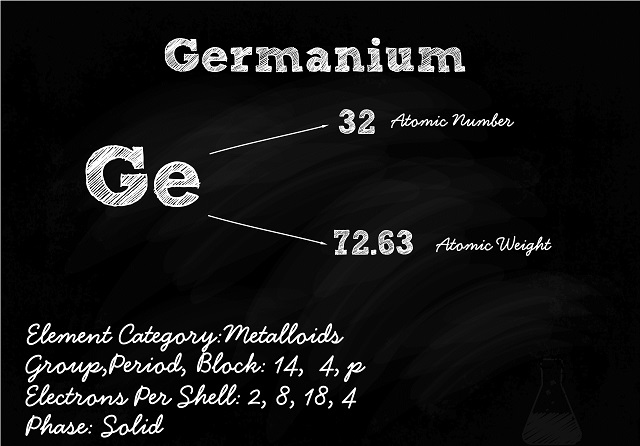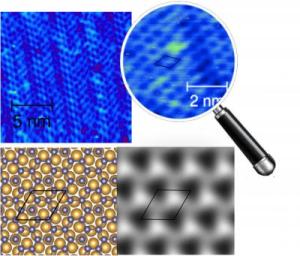
Image Credit: Artgraphixel.com/Shutterstock.com
A European research team has successfully synthesized germanene, a material considered to be a 'cousin of graphene.' Germanene is a 2D material that is anticipated to demonstrate remarkable optical and electrical properties. It is considered to hold significant potential for a wide range of applications in the electronics industry.
 This is a 16.2 nm ~ 16.2 nm STM image of the modulated honeycomb ã7~ã7 superstructure. Atomic structures (side and top views) and simulated STM images of three different models of germanene on the ã7~ã7 Au(111) surface. Credit: New Journal of Physics/IOP Publishing.
This is a 16.2 nm ~ 16.2 nm STM image of the modulated honeycomb ã7~ã7 superstructure. Atomic structures (side and top views) and simulated STM images of three different models of germanene on the ã7~ã7 Au(111) surface. Credit: New Journal of Physics/IOP Publishing.
A single layer of germanium atoms make up germanene. Though this 2D material had been proposed in 2009, and silicene and other similar 2D materials have been synthesized, germanene had remained elusive until now.
The new method the European research team has proposed for synthesizing germanene involves the deposition of individual atoms of germanium onto a gold substrate. This process takes place under an ultra-high vacuum and high temperatures. Interestingly, a research team in China has reported that they have also synthesized germanene using a platinum substrate.
Initially, the European researchers tried to use silver substrate for deposition of germanium, but that method failed. They then turned to a gold substrate, and tests confirmed that the material was indeed germanene.
The researchers analyzed the materials' electronic structure using spectroscopy and performed calculations based on density functional theory. Further analysis using a scanning tunnelling microscope showed that the material had a honeycomb structure, the distinguishing feature of 2D materials.
The research team states that germanene could possibly be made to grow on thin gold films placed over flexible substrates. This would enable large scale synthesis of the material.
Aix-Marseille University’s Professor Guy Le Lay, co-author of the study, stated that they have succeeded in synthesizing nearly flat germanene, which is a synthetic allotrope of germanium, not normally existent in nature.
He added that synthesizing the novel allotrope was a challenge and further research is required to characterize the material’s electronic properties.
Germanene also holds promise for quantum computing as it has unique properties necessary for topological insulators, especially up to room temperature.
This study has been published in the New Journal of Physics, a journal of the Institute of Physics and German Physical Society.